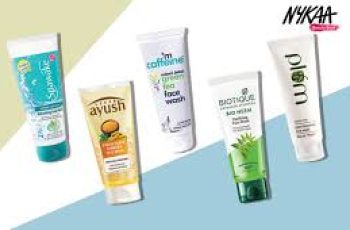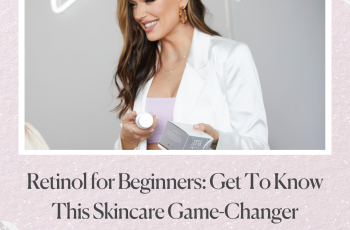
How to tell if your Vitamin C serum is oxidized?
The benefits of using a Vitamin C serum are endless, and many of us have already incorporated it into our daily routines. Despite the benefits of Vitamin C for the skin, it also has the disadvantage of oxidation, which can cause the ingredient to become less potent and effective in treating the skin. There are many factors to consider when trying to determine if your Vitamin C serum is oxidized. How does it look? What should you do if you find that your product is compromised? How does it affect your skin? We will answer all of these questions today.
How to tell if your Vitamin C serum is oxidized?
Vitamin C is an antioxidant, which means it is a powerful force in keeping your skin healthy and radiant, and protecting it from free radicals and other skin damage. Of all the skin care products available, Vitamin C has the shortest shelf life, as its effectiveness immediately decreases once the product comes into contact with oxygen.
The easiest way to tell if your Vitamin C serum is oxidized is to look at the color. Serums with higher levels of Vitamin C are clear and begin to turn yellow or brown about 3 months after opening. Once this happens, it’s a clear sign that the L-ascorbic acid is losing its effectiveness and, when broken down, turns into erythrulose, which is exactly what you find in self-tanning products and can last up to 7 days. The problem with erythrulose is that it can also cause unnecessary skin damage as it is exacerbated by increased exposure to free radicals, causing your skin to have to regenerate itself.
What Should a Vitamin C Serum Look Like?
As mentioned before, it’s always advisable to choose a Vitamin C serum that looks clear. This shows how high the level of Vitamin C in the formula is and allows you to see if it has been oxidized. Although it may be difficult to reconsider your initial opinion that Vitamin C should be orange, some brands have been known to add dyes to their formulas to recreate this orange color. It’s best to choose a colorless product in an opaque sealed bottle so that the Vitamin C stays as fresh as possible and isn’t exposed to too much UV light and oxygen, which can cause it to deteriorate faster.
Is It OK to Use Oxidized Vitamin C Serums?
Once the product has been opened and used, Vitamin C has a shelf life of about 3 months. After this time, you should expect the formula to start to fade and turn brown. There is nothing wrong with using the rest of the product, especially if there is still more than 10% active vitamin C left. There is concern about how serums react to your skin. It can cause discoloration and irritation, and some people experience breakouts such as spots and acne.
Is oxidized vitamin C bad for your skin?
There is no scientific evidence that oxidized vitamin C has any effect on the skin. However, there are many cases of skin irritation and discoloration due to oxidized L-ascorbic acid turning into the erythrulose ingredient in tanning products. Oxidized vitamin C is no longer a powerful antioxidant and can lead to the production of free radicals, environmental aggressors, and daily aggressors, making the skin vulnerable to damage and making signs of premature aging such as fine lines and wrinkles visible.
Because the L-ascorbic acid content in the product formula is low or even absent, you may find that vitamin C serums are less effective and have no effect on your complexion.
Can vitamin C serums be used daily?
Compared to other alpha hydroxy acids (also known as AHAs), vitamin C is safe to use daily. It fights skin damage and other stressors, creating a protective layer on the skin as you go about your daily life. Vitamin C serums are very effective in the mornings due to their antioxidant effects. However, many people find that applying them at night gives the AHAs a chance to work, uninterrupted by the daily damage they face during the day.
If you want to learn more about AHAs and their effects on the skin, you can read all about the benefits of AHAs and BHAs for skin care in our blog.
When should you throw away your vitamin C serum?
If your serum starts to turn yellow, it’s a clear sign that too much air has been mixed into the formula, making the vitamin C less effective. As soon as the formula shows any discoloration, it’s best to throw the product out completely. Vitamin C is a notoriously difficult ingredient to work with, and it’s not stable in aqueous solutions, making it even harder to determine if the percentage of vitamin C is at active levels and truly benefiting the skin. To ensure it’s treating the skin in the best possible way, it’s best to look at the ink on the packaging to see where the L-ascorbic acid is listed. If it’s below 6, it’s not enough to provide the best results for the skin.
So here are the answers to some of the most common questions about vitamin C, and how to tell if it’s oxidized. There is a very dedicated blog post on the benefits of Vitamin C for skin care that you can check out and get a better idea of the overall benefits and the results you will see when applied to your skin.
Here is some more information on Vitamin C. If you have any additional questions, don’t forget to follow us on Instagram. You can reach one of our skin care experts in a private message.
DQH Can I use salicylic acid first and then vitamin C?
It’s easy to create a skincare routine, but knowing how to use it is another thing entirely. In most cases, if you’re not getting the desired skin results, it could be due to the layering of conflicting ingredients. So, is it possible that salicylic acid and vitamin C are such ingredients? Or are these active ingredients the duo that’s been missing from your skincare routine? If you want answers, stick around because today we are going to explain the benefits of salicylic acid and vitamin C and how they can be used in your daily life.
What are the benefits of salicylic acid for skin?
Salicylic acid is one of the most commonly used beta hydroxy acids and is favored by many people with oily, acne-prone skin. This acid is derived from willow bark, and unlike its water-soluble relatives (called alpha-hydroxy acids), salicylic acid is oil-soluble, which means it can penetrate deeper into the lower layers of the skin. Once it reaches the lower layers, it can help unclog pores of excess sebum, dirt, bacteria, debris, and impurities. This results in clearer skin tones and greater definition.
Not only does salicylic acid benefit the underlying layers, but the outer surface of the skin benefits as well. When applied to the skin, salicylic acid removes the buildup of dead skin cells. This is accomplished by breaking the bonds that hold dead cells to the surface. Over time, this can cause the complexion to look dull and prone to acne, blackheads, and other blemishes.
If you’d like to learn more about salicylic acid and how it can improve your skin, check out this dedicated blog post from a beauty insider.
What are the benefits of vitamin C for skin?
Vitamin C is considered one of the most powerful antioxidants, which means it is very effective at fighting free radicals and preventing them from causing further skin damage. Examples of free radicals include pollution, central heating, UV rays and harsh climate. They attack proteins, fats and cell membranes as soon as they come into contact with the skin, causing signs of premature aging such as fine lines and wrinkles as well as hyperpigmentation, flaky patches of skin and loss of elasticity.
Many people usually prefer to use vitamin C in their morning routine as this ingredient gives the complexion a radiant glow. You’ll also find that vitamin C can target areas of hyperpigmentation, plumping the skin and reducing the appearance of fine lines and wrinkles.
The thing about vitamin C is that there are a lot of outdated studies going back to the 1950s that describe vitamin C as an unstable skin component. Thanks to improvements in modern technology, this is no longer the case as all products now contain a stable form of vitamin C.
Visit The Beauty Insider to learn more about vitamin C. So please check out our blog post.
Can I use salicylic acid first and then vitamin C?
Yes, you absolutely can. In fact, it’s thought that using salicylic acid before using vitamin C ensures it penetrates faster and works faster.
This is an efficient way to utilize two power sources, and the reason has to do with pH. For example, the skin’s natural pH is about 4.7, making it slightly acidic. Salicylic acid and vitamin C are also both acidic, and you’ll find that vitamin C is absorbed quickly into the skin. Therefore, using salicylic acid beforehand can increase the acidity of the skin and allow vitamin C to penetrate into the skin faster.
While this is considered an effective way to combine two powerful ingredients, you need to be aware of your skin type and how it reacts to certain active ingredients. Even people with perfect, normal skin can experience skin sensitivity and irritation. Therefore, always consult a doctor or dermatologist before using any new products on your skin.
It’s also important to follow skin application rules. In this case, you need to use the product correctly to ensure you get the best results for your skin. If you’re not sure what I mean, the basic rule for skin is to start with the thinnest consistency and work your way up to the thickest consistency. This prevents a barrier from forming on the surface, preventing other active ingredients from penetrating the skin.
Can I use salicylic acid at night and vitamin C in the morning?
Yes, absolutely, this is considered the most effective way to get returns without any adverse side effects. This is because there is enough time between applications to ensure that the skin’s pH levels return to balance.
You’ll also find that Vitamin C is rich in antioxidants and is perfect for use in the morning to ensure your skin is protected and looking its healthiest. Due to the small size of salicylic acid molecules, it is an acid that is able to reach the deepest parts of the skin. While this is effective at keeping skin clear, it also increases the risk of irritation and photosensitivity. Therefore, many people prefer to use powerful BHAs in their evening routine without exposure to UV rays, pollution, or harsh weather.
Warning: If you avoid using sunscreen every day, none of these ingredients will do what your skin needs. The combination of chemical peels and powerful ingredients increases the risk of further damage to the skin’s surface. Use SPF 50 every day to keep your skin protected and your lipid barrier healthy, even on cloudy days, keeping your skin in top condition.


